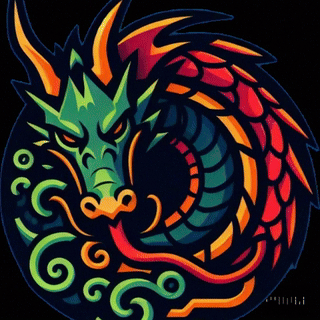Let’s crack open one of the most fascinating, mysterious, and magical parts of ancient Egyptian mythology. We’re diving into the ultimate survival guide for the soul: the legendary Book of the Dead.
Part 11: The Book of the Dead – Spells, Scrolls, and Sacred Journeys
Okay, picture this. You’ve just died.
Don’t panic—it’s not over yet. In fact, for ancient Egyptians, death was just the beginning. Your soul’s about to go on the most important road trip of your existence. And lucky for you? You’ve got a scroll full of magic spells, passwords, and divine hacks tucked right into your coffin.
Enter: the Book of the Dead—your cosmic user manual for navigating the afterlife like a total pro.
What Is the Book of the Dead?
Despite the spooky name, the “Book of the Dead” isn’t actually a book, at least not in the way we think of books today. It’s more like a collection of magical texts—scrolls, prayers, spells, and illustrations—written on papyrus and placed in tombs with the deceased.
The original Egyptian name? "The Book of Coming Forth by Day"—which honestly sounds way more epic and poetic.
Why “coming forth by day”? Because the soul wasn’t meant to stay hidden in the darkness of death. With the right knowledge, it could rise, travel freely, and eventually be reborn in the afterlife. The book was a guide to help the soul do just that.
Your Afterlife Survival Kit
So what’s in this magical cheat sheet?
Honestly... everything. The Book of the Dead covered all the bases. Think of it like a spiritual GPS with built-in anti-ghost security, divine passwords, and even cosmic etiquette tips. Here's what it had in store:
Spells to protect you from demons, serpents, and nasty spirits lurking in the underworld.
Passwords and names to help you pass through magical gates and speak to gatekeeper gods. (Because yes, the afterlife had serious security.)
Instructions for preserving your soul so it wouldn’t be lost or eaten.
Guidance for the Weighing of the Heart ceremony, complete with confessions and prayers to prove your worth.
There were spells to help you breathe, to keep your heart from betraying you, to stop your body from rotting, and even spells that turned you into a bird, a lotus flower, or a divine falcon—because shape-shifting was totally on the table in the afterlife.
Oh, and some versions had illustrations too—colorful, beautiful depictions of gods, monsters, tombs, and temples. These weren’t just pretty decorations. They were magical in themselves, like visual spells encoded with sacred energy.
Tailor-Made for the Dead
One of the coolest things? The Book of the Dead wasn’t one-size-fits-all. Wealthy individuals would often commission a custom version with specific spells and personal prayers written just for them.
Scribes would paint the scrolls by hand—sometimes over 70 feet long—rolling them up and placing them in the tomb beside the mummy. Some people had entire chapters written directly on their coffins, sarcophagi, or even mummy wrappings.
The more spells you had, the better your chances of making it to the paradise known as the Field of Reeds. It was like spiritual insurance. Because let’s be real—navigating the Duat was no joke.
The Ultimate Boss Fight: Judgment Day
We’ve talked about the Weighing of the Heart, but it’s worth repeating here, because this was the moment—and the Book of the Dead prepared you for it in great detail.
You’d stand before Osiris, with Anubis guiding you and Thoth recording everything. Your heart was placed on a scale against Ma’at’s feather. To help tip the scales in your favor, you’d recite the “Negative Confession”—a list of declarations like:
“I have not stolen.”
“I have not killed.”
“I have not lied.”
“I have not polluted the Nile.”
(Kind of like a divine resume mixed with a cosmic lie detector test.)
The scroll had everything you needed to say, step-by-step. It wasn’t just about being good—it was about knowing the ritual, the language, and the truth.
Beyond the Book
The Book of the Dead wasn’t the first or only guide to the afterlife. It actually evolved from earlier texts:
The Pyramid Texts, carved into the walls of royal tombs way back in the Old Kingdom.
Then came the Coffin Texts, painted inside coffins for high-ranking officials and nobles.
The Book of the Dead was like the greatest hits album of both, refined and expanded during the New Kingdom and beyond. Over time, it became more accessible—not just for pharaohs and priests, but for anyone who could afford a proper burial and a scroll.
Why It Still Matters
Here’s the wild part: these spells were written over 3,000 years ago, and we still have them. Museums around the world hold copies—some stunning, some tattered, but all whispering the same ancient truth:
The Egyptians were obsessed with life after death. Not out of fear, but out of hope. They didn’t see death as an ending, but as a long journey—and they believed, with the right knowledge and a little divine help, they could make it to the other side.
And maybe, deep down, we’re still looking for the same thing.
Next up: Part 12: Temples and Tombs – Where the Divine Walked, where we explore the sacred spaces carved into stone—those towering temples and painted tombs that still echo with myth, magic, and messages from the gods. Ready to step into the sanctuaries of ancient Egypt? 🏛️💫
480-366-3550 (Domain Sales)
© SDBEST LLC, 2025. All rights reserved.
Sponsorship Disclosure
Terms of Service
